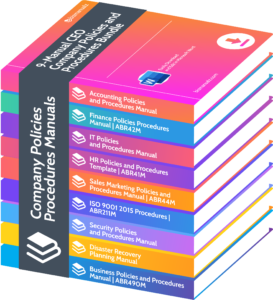What Are Core Fulfillment Processes?

Welcome to the world of complex business processes, where every step and action is crucial for success. But don’t worry, we’ve got you covered. In this article, we’ll explore the importance of core fulfillment processes for your business and how they can help streamline operations and boost efficiency. Are you ready to take your business to the next level? Let’s dive in! What Are Core Fulfillment Processes?
What Are Core Fulfillment Processes?
Core fulfillment processes refer to the essential activities that allow a company to efficiently deliver products or services to its customers. These processes include:
- Order processing
- Inventory management
- Picking and packing
- Shipping
By optimizing these processes, businesses can improve customer satisfaction, decrease costs, and increase efficiency. Utilizing automation and technology solutions can help streamline these processes, minimizing errors and expediting order fulfillment. It is also crucial to monitor and measure performance metrics, such as order accuracy and on-time delivery, in order to continuously enhance core fulfillment processes and meet customer expectations.
Why Are Core Fulfillment Processes Important?
Why Are Core Fulfillment Processes Important?
Core fulfillment processes play a crucial role in the smooth and efficient operation of any business. They encompass the necessary steps for fulfilling customer orders, including order processing, inventory management, and shipping. These processes are vital as they directly impact customer satisfaction, operational efficiency, and overall profitability.
With well-defined and optimized core fulfillment processes, businesses can ensure the accurate and timely delivery of products, minimize errors and delays, and enhance the overall customer experience. This, in turn, leads to higher customer retention rates, increased sales, and a competitive advantage in the market.
What Are the Steps Involved in Core Fulfillment Processes?
Core fulfillment processes are the essential steps involved in delivering a product or service to a customer. These processes are crucial in ensuring customer satisfaction and building a successful business.
In this section, we will discuss the five key steps involved in core fulfillment processes. From order processing to customer service, each stage plays a critical role in the overall fulfillment process. By understanding these steps, businesses can streamline their operations and provide a seamless experience for their customers.
1. Order Processing
Order processing is a crucial step in the fulfillment process. It involves managing customer orders from start to finish. Here are the steps involved in the order processing stage:
- Receiving orders: Collecting and recording customer orders through various channels such as websites, phone, or email.
- Order verification: Checking the accuracy of the order details, including items, quantities, and shipping addresses.
- Order entry: Entering the verified order information into the system for further processing.
- Picking and packing: Selecting the ordered items from inventory and securely packaging them for shipment.
- Labeling and documentation: Affixing shipping labels and preparing necessary documentation for the shipment.
- Shipping: Handing over the packaged orders to the shipping carrier for delivery to customers.
- Order tracking: Providing customers with tracking information to keep them informed about the status and location of their orders.
- Order confirmation: Sending order confirmation notifications to customers, confirming that their orders have been processed and shipped.
2. Inventory Management
Inventory management is a crucial aspect of core fulfillment processes. It involves accurately tracking and controlling the flow of goods in and out of a business. The key steps in effective inventory management include:
- Tracking inventory levels accurately.
- Reordering products when stock reaches a certain threshold.
- Implementing efficient storage and organization systems.
- Regularly conducting inventory audits to identify discrepancies.
- Analyzing inventory data to forecast demand and optimize stock levels.
Fact: Proper management of inventory can help businesses reduce costs, minimize stockouts, and improve customer satisfaction.
3. Warehousing and Distribution
Warehousing and distribution are crucial components of the core fulfillment process, ensuring efficient storage and timely delivery of products.
- Receiving and Storing: Goods are received, inspected, and stored in designated areas based on factors such as product type and demand.
- Pick and Pack: Items are selected from inventory, securely packed, and labeled for shipment.
- Inventory Management: Constantly monitoring stock levels and replenishing to avoid stockouts or overstocking.
- Order Consolidation: Combining multiple orders into one shipment to optimize transportation and reduce costs.
- Shipping and Tracking: Coordinating with shipping carriers to transport goods and providing customers with tracking information.
- Reverse Logistics: Managing returns and handling customer exchanges or refunds.
Pro-tip: Implementing barcode or RFID technology can greatly enhance accuracy and efficiency in warehousing and distribution processes.
4. Shipping and Delivery
Shipping and delivery are essential components of the core fulfillment process. These steps are crucial in ensuring that products are delivered to customers in a timely and efficient manner. Below are the key steps involved in the shipping and delivery process:
- Order picking and packaging: This step involves locating the products in the warehouse, securely packaging them, and preparing them for shipment.
- Shipping carrier selection: Selecting the appropriate shipping carrier based on factors such as cost, speed, and reliability.
- Labeling and documentation: Properly labeling packages and preparing all necessary shipping documents.
- Tracking and monitoring: Keeping track of shipments and providing customers with updates on the status of their packages.
- Delivery and customer notification: Ensuring that packages are delivered to the correct address and notifying customers of successful delivery.
5. Customer Service
Customer service is a crucial aspect of core fulfillment processes that ensures customer satisfaction and loyalty. Here are some steps to provide excellent customer service:
- Respond promptly and courteously to customer inquiries or complaints.
- Offer personalized assistance and solutions to meet individual needs.
- Provide clear and accurate information about products, services, and policies.
- Handle returns, exchanges, and refunds efficiently and fairly.
- Continuously train and empower customer service representatives to deliver exceptional service.
In 1985, Nordstrom famously accepted a tire return, despite not even selling tires. This extraordinary act of customer service earned them lasting goodwill and solidified their reputation for exceptional customer care.
How Can Core Fulfillment Processes be Improved?
In today’s fast-paced business landscape, it is essential for companies to constantly evaluate and improve their core fulfillment processes. These processes are the backbone of any successful organization, as they involve the crucial steps of fulfilling customer orders and delivering products or services.
In this section, we will discuss various methods for optimizing core fulfillment processes, including utilizing technology, streamlining processes, prioritizing customer satisfaction, and regularly reviewing and updating processes. By implementing these strategies, companies can enhance their efficiency and ultimately drive greater success.
1. Utilizing Technology
Utilizing technology is crucial for optimizing core fulfillment processes. Here are steps to effectively incorporate technology:
- Automate Order Processing: Implement order management systems to streamline order processing, reducing errors and increasing efficiency.
- Invest in Inventory Management Software: Use software to track inventory levels, monitor stock movement, and automate reordering processes.
- Implement Warehouse Management Systems: Utilize technology to optimize storage, picking, packing, and shipping processes in warehouses.
- Utilize Shipping and Delivery Software: Use software to generate shipping labels, track shipments, and provide real-time updates to customers.
- Leverage Customer Service Technology: Utilize CRM systems and chatbots to provide seamless customer support and enhance overall satisfaction.
2. Streamlining Processes
Streamlining processes in core fulfillment is crucial for optimizing efficiency and customer satisfaction. To achieve this, follow these steps:
- Identify bottlenecks and unnecessary steps in the fulfillment process.
- Automate manual tasks using technology, such as order processing and inventory management systems.
- Implement lean principles to eliminate waste and reduce lead times.
- Optimize warehouse layout and organize inventory for easy access and efficient picking.
To further enhance streamlining:
- Regularly review and update processes to adapt to changing needs.
- Train employees to ensure they understand and follow streamlined processes.
- Utilize real-time data and analytics to make data-driven decisions for continuous improvement.
3. Prioritizing Customer Satisfaction
Prioritizing customer satisfaction is an essential aspect of core fulfillment processes to ensure repeat business and maintain a positive brand reputation. To achieve this, here are steps that businesses can follow:
- Understand the needs and expectations of customers.
- Communicate promptly and clearly with customers.
- Provide personalized and efficient service to customers.
- Handle customer complaints and issues with empathy and urgency.
- Seek feedback from customers and continuously improve based on their input.
By implementing these steps, businesses can improve customer satisfaction, foster long-lasting relationships, and drive customer loyalty.
4. Regularly Reviewing and Updating Processes
Regularly reviewing and updating core fulfillment processes is essential for maintaining efficiency and meeting customer expectations. Here are the steps to follow for an effective review and update process:
- Identify areas for improvement by analyzing data and feedback.
- Create a process improvement plan with specific goals and timelines.
- Implement changes and track their impact on key performance indicators.
- Regularly monitor and evaluate the updated processes for effectiveness.
- Communicate changes to staff and provide necessary training.
Fact: Companies that regularly review and update their fulfillment processes experience higher customer satisfaction rates and increased operational efficiency.
What Are Some Examples of Core Fulfillment Processes?

Core fulfillment processes are essential for the success of any business, as they ensure that products or services are delivered to customers in a timely and efficient manner. In this section, we will discuss some common examples of core fulfillment processes and how they operate within different industries. From e-commerce order fulfillment to food delivery services, we will explore the various methods and strategies used to fulfill customer needs and expectations.
1. E-commerce Order Fulfillment
E-commerce order fulfillment is a crucial process that involves several steps to ensure the prompt and accurate delivery of products to customers. These steps include:
- Order processing: Receiving, verifying, and processing customer orders in a timely manner.
- Inventory management: Efficiently keeping track of stock levels to fulfill orders.
- Warehousing and distribution: Effectively storing, organizing, and shipping products from warehouses.
- Shipping and delivery: Carefully selecting shipping carriers and coordinating the transportation of orders.
- Customer service: Providing exceptional support and addressing any inquiries or issues related to orders.
By effectively managing these steps, businesses can significantly improve customer satisfaction and optimize their e-commerce operations. This can be achieved by utilizing technology, streamlining processes, prioritizing customer satisfaction, and regularly reviewing and updating fulfillment processes.
2. Retail Store Inventory Management
Effective inventory management is crucial for the smooth operation and profitability of retail stores. Here are the key steps involved in managing inventory effectively:
- Accurate Stock Tracking: Maintaining an up-to-date record of inventory levels, including incoming and outgoing stock, is essential.
- Regular Stock Counts: Conducting regular physical stock counts helps identify any discrepancies or theft.
- Replenishment Planning: Analyzing sales patterns and customer demand allows for accurate forecasting of future inventory needs.
- Optimized Storage: Organizing inventory in a logical manner maximizes space and ensures easy access.
- Effective Order Fulfillment: Prioritizing orders based on sales velocity and ensuring quick and accurate fulfillment is crucial.
In 2003, Walmart implemented a new inventory management system that utilized radio frequency identification (RFID) technology. This revolutionary system allowed for real-time tracking of inventory, resulting in a 16% reduction in out-of-stock occurrences and improved overall inventory accuracy. This successful implementation has set a new standard for retail store inventory management.
3. Food Delivery Services
Food delivery services have become increasingly popular, offering convenience and a wide variety of culinary options. The core fulfillment processes involved in these services include:
- Order placement: Customers browse menus and place orders through online platforms or mobile apps.
- Order processing: Once an order is received, it is confirmed and prepared for delivery.
- Food preparation: Skilled chefs and kitchen staff prepare the selected dishes with attention to quality and presentation.
- Packaging: The food is carefully packaged to ensure freshness and prevent spillage or damage during transportation.
- Delivery: Couriers or drivers pick up the order and deliver it promptly to the customer’s location.
- Customer service: Food delivery services prioritize customer satisfaction by addressing inquiries, resolving issues, and ensuring a positive experience.
In a similar tone, a true story illustrates the importance of efficient core fulfillment processes in food delivery services. Once, during a busy evening, a customer placed an order for dinner. Despite the high demand, the order was processed promptly, and the delivery arrived within the estimated time. The food was neatly packaged and still hot, showcasing the service’s commitment to quality. The customer was delighted with the timely delivery and the delicious meal, highlighting the positive impact of streamlined fulfillment processes.
4. Subscription Box Services
Subscription box services are a popular form of e-commerce where customers receive curated boxes of products on a recurring basis. These services rely on core fulfillment processes to ensure smooth operations and customer satisfaction.
- Order Processing: Subscription box services must efficiently handle incoming orders, including payment processing and order confirmation.
- Inventory Management: Maintaining accurate inventory levels is crucial to avoid stockouts or overstocking.
- Warehousing and Distribution: Subscription boxes require storage and organized shipping processes to ensure timely and accurate deliveries.
- Shipping and Delivery: Choosing reliable shipping partners and tracking packages is essential for a positive customer experience.
- Customer Service: Providing responsive and helpful customer support is vital to address any issues or inquiries.
To improve core fulfillment processes, subscription box services can utilize technology for automated inventory management and order tracking. Streamlining processes through efficient workflows and reducing unnecessary steps can also boost efficiency. Prioritizing customer satisfaction by offering personalized experiences and regularly reviewing and updating processes based on feedback is crucial.
Examples of subscription box services include beauty boxes like Birchbox, meal kit services like HelloFresh, and book subscription services like Book of the Month.
Core Fulfillment Processes
Frequently Asked Questions

What are Core Fulfillment Processes?
Core Fulfillment Processes refer to the essential steps or procedures involved in successfully completing a sale or delivering a product or service to a customer. These processes are crucial in ensuring customer satisfaction and business success.
Why are Core Fulfillment Processes important?
Core Fulfillment Processes are important because they ensure that a business meets its customers’ expectations and delivers products or services in a timely and efficient manner. These processes also help in managing costs, optimizing resources, and maintaining a good reputation in the market.
What are some examples of Core Fulfillment Processes?
Some examples of Core Fulfillment Processes include order processing, inventory management, packaging and shipping, invoicing and payment collection, and customer service. These processes may vary depending on the nature of the business, but they all contribute to the overall fulfillment of a sale.
How can a business improve its Core Fulfillment Processes?
A business can improve its Core Fulfillment Processes by regularly reviewing and analyzing its existing processes, identifying bottlenecks and areas for improvement, implementing automation and technology solutions, and constantly seeking feedback from customers to make necessary adjustments.
What are the consequences of poor Core Fulfillment Processes?
Poor Core Fulfillment Processes can lead to dissatisfied customers, increased costs due to inefficiency and errors, delayed deliveries, and a damaged reputation in the market. This can ultimately result in loss of business and revenue for the company.
How does technology play a role in Core Fulfillment Processes?
Technology plays a crucial role in Core Fulfillment Processes by enabling automation, streamlining communication and data management, enhancing efficiency and speed, and providing real-time tracking and updates to customers. Embracing technology can greatly improve a company’s fulfillment processes and overall business operations.

















Leave a Reply